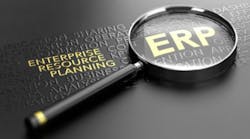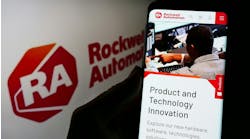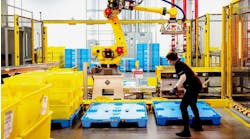Low-code ERP: Have your ERP cake and customize it, too
By Tom Brennan, CMO at Rootstock Software
Implementing a traditional ERP system was a lot like baking a cake. It took lots of ingredients; hardware platforms, databases, out-of-the box software plus third party add-ons, custom configurations, an IT staff, and a team of consultants to stir it up. Once it was done, you had a big beautiful ERP cake. It was a work of art, created just for your company. It worked great for a while, until something in your business changed.
Traditional or legacy ERP systems have one big drawback: they are difficult and expensive to customize. Once implemented, even the smallest change can require coding, hiring a consultant to make the change, then forcing updates to reports, more coding, more consultants.
As a result, an ERP cake can grow stale over time because upgrades are too disruptive and expensive. A company either has to start over or reimplement any customizations. Many companies don’t dare to touch it. And before they know it, they’re eight versions behind on upgrades.
Manufacturers today need speed and agility to adapt to changing markets, disrupted supply chains, customer demands and more. Let’s face it—change is nothing new; manufacturers always need to adjust to change. But the pace of change and amount of disruption continue to increase, and they need quick access to information and critical business intelligence to adjust. They need their ERP system to help them innovate and differentiate.
COVID-19 raised the bar on disruption for manufacturers. Along with supply chain and distribution issues, it became essential in most cases to support a remote, mobile workforce, and do it in a matter of days.
The pace of business and the ability to adjust business models, product mixes, and add new customer services has never been so intense. Old ERP systems simply can’t cut it anymore, especially in this new world of remote workforces.
Managing all of the “ingredients” of a legacy ERP system and all of their interdependencies, takes time, money, and people.
Cloud evolution
Cloud technology has relieved some of the IT burden over time. ERP vendors ‘hosted’ their software and took responsibility for the underlying IT stack to minimize the IT operation costs. Many of these ERP systems were the same underlying software as the on-premise version, so customization was still a time-intensive and costly proposition.
As cloud ERP evolved from hosted to ‘as a service,’ it became more like a utility, where features could be turned on and capacity turned up on-demand. This made them easier to upgrade and change, but still limited the ability for the business user to make changes and extract information.
Traditional ERP systems, whether on-premise or hosted in the cloud, still require a lot of heavy lifting to implement and custom-fit a specific business.
Low-code ERP further addresses the over reliance companies have on IT and puts more power in the hands of businesspeople to make changes and to customize ERP. In other words, manufacturers can now have their ERP and customize it for their specific needs, too.
Low-code ERP
More and more companies are turning to low-code platforms for their applications, including ERP. Gartner predicts that, “By 2024, low-code application development will be responsible for more than 65% of application development activity.”
Low-code software development is based on cloud platforms that allow users to drag and drop components. Its “clicks not code” approach requires little or no coding to build or modify applications and processes.
ERP systems, built on a low-code platform, are graphical, modular and allow business users to quickly make the updates and customizations they need without getting in an IT project queue.
There are guardrails and controls within the platform and the apps that maintain the integrity of the ERP system. Once changes are made, unlike legacy ERP systems, companies can still take advantage of upgrades and new releases.
Low-code ERP comes with business logic built-in. There are off-the-shelf modules and functions that can be used out of the box, or customized. Security is built in at the cloud platform level and within the software, so additional coding or software is not required. The user environment is more intuitive and allows business users to build or customize apps.
Accessing the applications through configurable portals or dashboard, and no longer reliant on pre-defined fields and labels, users can create their own ‘home page’ and not be stuck with the one designed by the ERP vendor.
Instead of writing code, developers and business users can focus on things like business logic and processes, workflow, and what they actually need to see on their screen to do their job.
Putting more power in the hands of the business user allows them to make strategic change faster, to meet the demands of a business and its customers.
Rise of the citizen developer
Creating or modifying apps on a low-code platform is so easy a business user can do it. Forrester describes these business users as “citizen developers.”
Here is just a sample of what these low-code ERP citizen developers can do:
Design Mobile Apps—Remote work is more prevalent today than ever. With a mobile app a salesperson can check availability for a customer while on site. But mobile doesn’t just mean remote. A citizen developer can create simple mobile app that allows the person in the warehouse to enter inventory parts or enable someone on the shop floor to close a work order.
Workflows—Visual process flows can be created to make it easy to view the steps and logic, while also documenting the process for auditors. A citizen developer can “drag and drop” a sequence, such as an order approval process to visually guide workers through the process and enable an intuitive user experience. Workflow templates that come out of the box can be used or customized based on business needs.
Data Analytics (Data Visualizations)—Accessing, analyzing and understanding data can be a challenge in a traditional ERP system. With low-code ERP, business users have easier access to the data they need to make decisions. The user environment is more intuitive, and users can easily add visual data analytics to pages using drag-and-drop functionality.
Artificial Intelligence—Citizen developers can embed AI into key ERP operations. For example, custom analytics and predictions can be dropped into a process or function to determine the next recommended action. With these insights, companies can operate more intelligently at all levels.
Online Communities—Low-code enables citizen developers to extend ERP to bring together customers, distributors, and other partners. On a seamless cloud platform, that combines ERP and CRM, customers interactions become instantly visible within ERP. Through these online communities, business users share appropriate information with specific community members in a secure manner.
Today, low-code ERP can be configured to enable a remote, yet connected workforce that is more efficient, adaptable to change, and informed with critical business intelligence. Businesses using low-code ERP get the agility they need to respond to changing markets and customer demands. They can use their ERP software to truly differentiate their business.
In other words, they can have their ERP cake and customize it, too.



